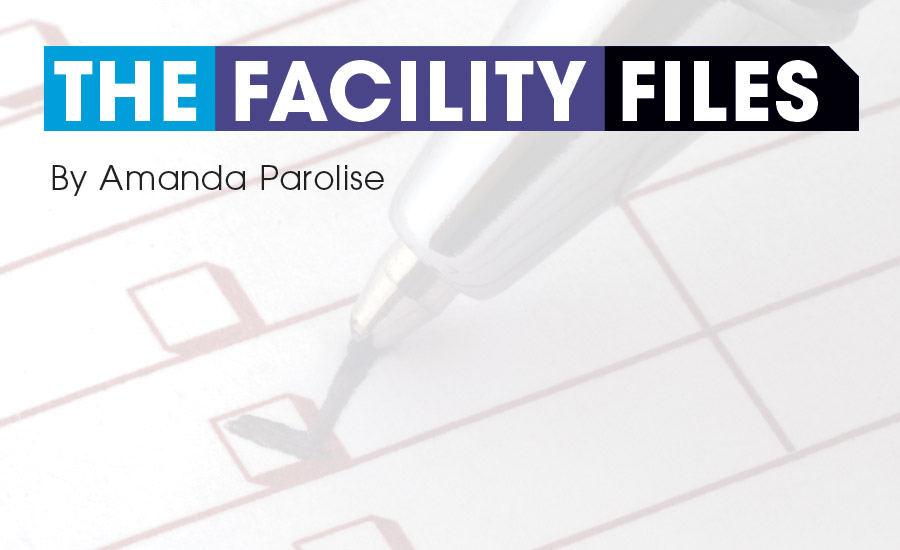Commercial Office Building Retrofit To Radiant Heat Design-Bid-Build Project
New Construction Using Construction Management Project Delivery

This month’s B2B will focus on a new 12-story patient tower located at a health care campus. This month’s test will address the design intent of an engineered zoned smoke control of return air, supply air, and exhaust air system serving the patient floor common corridors. The associated elevator tower will have its own, stand alone engineered smoke control 100% outside air unit to positive-pressurized elevator shaft system.
At the recommendation of the design team leader, the building owner has chosen the project delivery method to be construction management (CM) in accordance with Construction Management Association of America (CMAA).
A design team-CM team meeting will be coordinated so that the owner, owner’s representative, facility manager, design team, infection control (IC) 3rd-party consultant, CM’s project manager, and the CM’s estimator — along with a 3rd-party commissioning and air and water balancing (CxTAB) consultant — will review the design team’s building program and the Basis of Design. The team will review 2015 ASHRAE Handbook — HVAC Applications chapter 8 (Healthcare Facilities), chapters 36 through 43 (Building Operation and Management), chapter 53 (Fire and Smoke Control), and chapter 59 (HVAC Security). They will also read ANSI/ASHRAE/ASHE Standard 170-2013 for a complete understanding of ventilation and air filtration for a proposed health care facility. This information, combined with the owner’s own knowledge of operating health care facilities, will assist the team in understanding the intricacies of owning, operating, and managing this building.
With all these design guidelines from ASHRAE, the owner’s representative shall lead the discussion pertaining to specific building standards that need to be applied to this project, as well as a project scheduling/timeline. For the facility operation, with in-house staff and not an outsourced group, the staff will want to be assured there is adequate contract specification requirements included pertaining O&M, training, preventive maintenance work order system, and energy operating budget.
At the end of the Conceptual Design Phase CM project, the facility manager and a few of her O&M technicians, including the BAS operator, will want to contribute information to the design team member’s writing of the contract specification and more specifically to the following activities: training, service contracts, parts inventory, and as-built drawings requirements.
For this January B2B, the design-CM team will work together as owner-designer-builder, based on a building program construction budget. The CM estimator will be involved in the design phase and be able to contribute to the contract documents to stay within budget and on schedule. In the construction phase, the O&M technicians will want to revisit the issues noted above that were in the design phase.
Next comes the startup and commissioning phases, and the O&M staff will want to be proactive in following along with the CM team’s mechanical-electrical in-house coordinator and the subcontractor’s startup personnel and receive equipment and system training using the O&M manuals and contract drawings (that will eventually become the as-built drawings).
Once the startup has been completed, the ATC subcontractor, owner representative, and CxTAB consultant will complete the air balancing of the new central air and exhaust air system. The IC consultant will commission and instruct O&M staff on IC policy and procedure. The HVAC subcontractor shall go through an automatic control system initial dry-run demonstration prior to the CM project manager and job superintendent and their subcontractors demonstrating the HVAC system to the CxTAB consultant and O&M staff. The ATC subcontractor will also begin collecting system performance by trending pertinent HVAC system and equipment data, including the following:
[X] Outdoor air dry bulb and wet bulb temperature [X] Corridor space pressure [X] Outdoor air quantity [X] Exhaust air quantity [X] Pressure differential between smoke floor and floor above and below [X] Alarms [X] Offsite internet computer control interface.
Taking the same approach as the design engineering, the facility manager’s personnel will use a series of computer-generated touchscreen project checklists that allows her staff to confirm that the following facility files have been collected. This process should start at the beginning of construction and not at project closeout so that the facility files can be input into a CMMS system. Touchscreen O&M checklists should include:
[X] equipment shop drawings [X] O&M manuals, parts list, and lubricants [X] troubleshooting tips [X] remote monitoring instructions.
The O&M staff should review the contractor-produced sheet metal field fabrication/field coordination drawings prior to fabrication. Touchscreen service checklists should include:
[X] Location of automatic dampers, smoke dampers, and volume dampers [X] Filters [X] Equipment and control devices [X] Access for servicing equipment.
The training process should include specific HVAC system ventilation and IC training, as well as emergency plan training due to unexpected alarm (e.g., smoke condition alarm). Air balancing report will be completed and as-built conditions updated after the final TAB report. This will require the TAB subcontractor to provide the air balancing reports along with the associated system flow diagrams, noting quantities and pressures for rebalancing if necessary as part of the project closeout documents. Touchscreen training checklists should include:
[X] equipment [X] system normal operation [X] emergency normal operation [X] automatic controls [X] energy management.




